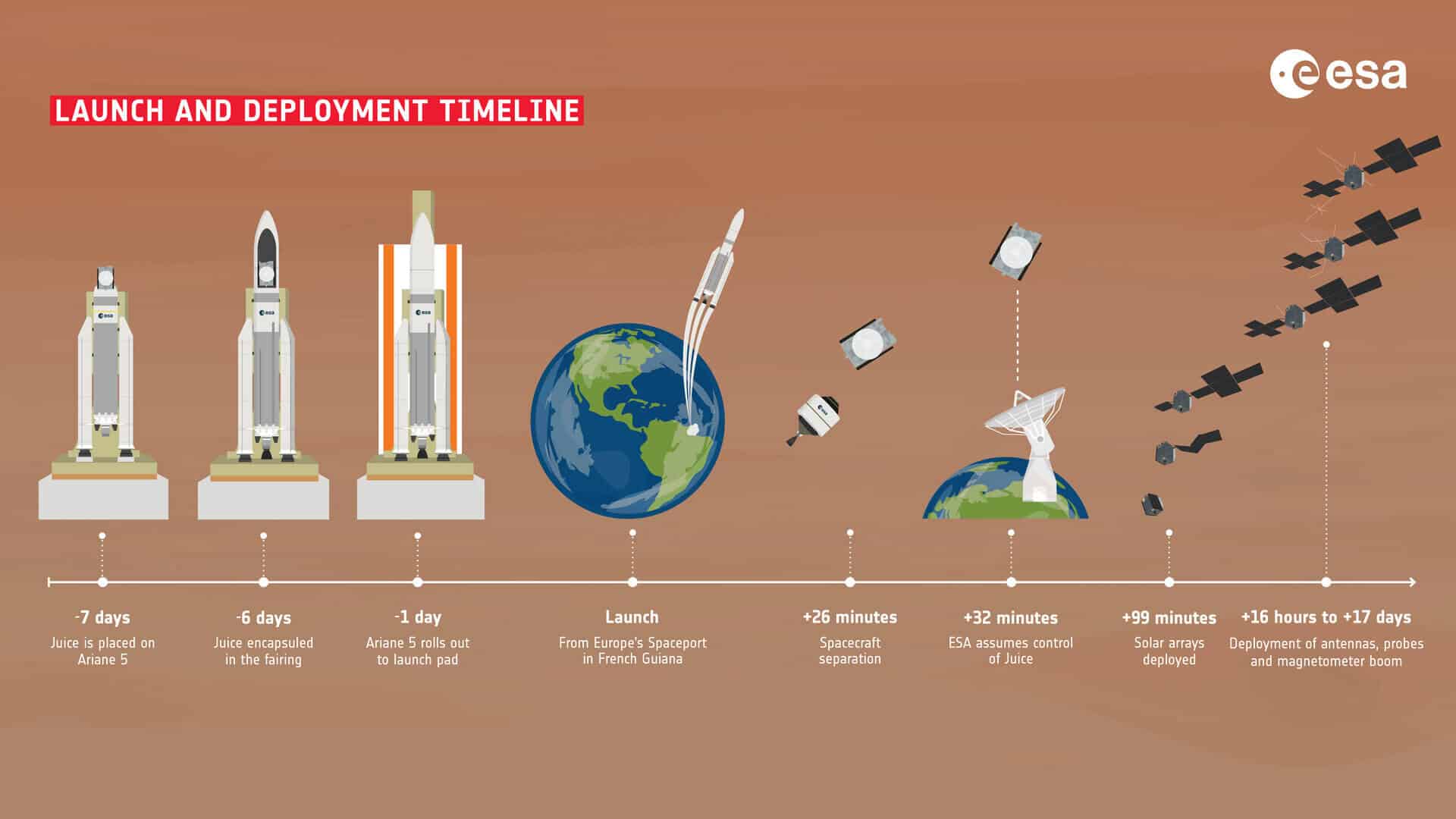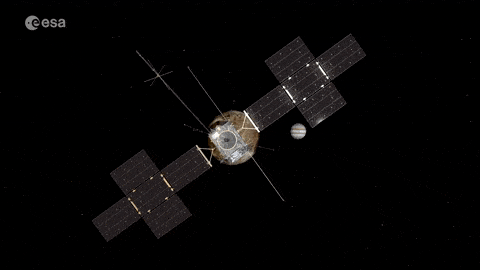The purpose of the operation is to find out if the oceans hidden beneath the surface of Jupiter's icy moons have the potential to support extraterrestrial life.

The European spacecraft JUICE is ready to embark on an eight-year odyssey in the solar system. The spacecraft will be launched from the space center in Kourou in French Guinea on 13/4/2023 at 15:15 Israel time and will take close-up photos of the volcanic moon Io and its icy siblings Europa, Ganymede and Callisto. The purpose of the operation is to find out if the oceans hidden beneath the surface of Jupiter's icy moons have the potential to host extraterrestrial life.
More than 400 years after they were discovered by Galileo, JUICE will provide a much clearer picture of Europa, Ganymede and Callisto, before becoming the first spacecraft to orbit one of Jupiter's moons.
It will be the first European space mission to go into the outer solar system beyond Mars.
Jupiter is more than 600 million km from Earth and JUICE will travel a 2 billion kilometer detour before its scheduled arrival in July 2031. It will use the gravity of Earth and Venus to gain momentum to accelerate its speed in order to reach Jupiter on time the planned
The extra flight time will allow JUICE's array of solar panels – covering an area of 85 square meters, and which is the largest ever built for an interstellar spacecraft – to absorb as much electricity as possible. The spacecraft will use this energy when it passes the orbit of Mars. The spacecraft will then have to slow down and slip into orbit around Jupiter. This maneuver will be performed autonomously.
When JUICE reaches Jupiter's orbit, it will make 35 flybys of Europa, Ganymede and Callisto. It will then enter orbit around Ganymede, the largest of the three, before eventually falling to its surface.
JUICE's ice-penetrating cameras, sensors, spectrometers and radars will study the moons to determine whether they could be habitable for life in the past or present. The goal is to observe the underground oceans that are at a depth of 10-15 km below the surface. This extreme environment can allow bacteria and single-celled organisms to exist.

JUICE will search for conditions capable of supporting life, including liquid water and an energy source, which could come from the tidal effect that Jupiter's gravity has on its moons. Measuring magnetic signals can determine whether the water on Ganymede is in contact with its rocky core, which would allow chemical elements necessary for life to dissolve in the water.
"JUICE will also perform the first study of Jupiter's magnetosphere using a dedicated hyphen, to understand its complex interactions with the solar wind and investigate the fundamental processes that accelerate particles to high energies."
The European Space Agency will not be alone in orbiting Jupiter. NASA's Clipper mission is scheduled for launch in 2024 and is preparing to orbit the moon Europa.
More of the topic in Hayadan:
- The Israeli point of the JUICE spacecraft that will be launched to Tzedek this week
- Hubble finds first evidence of water vapor in the atmosphere of Jupiter's moon Ganymede
- Will an Israeli atomic clock fly to Neptune's moon Rahab?
- NASA is considering developing a lander to search for life on Jupiter's moon Europa
